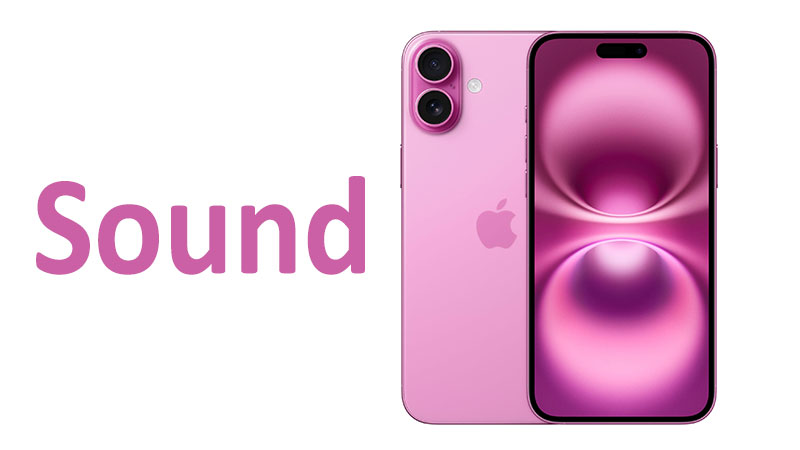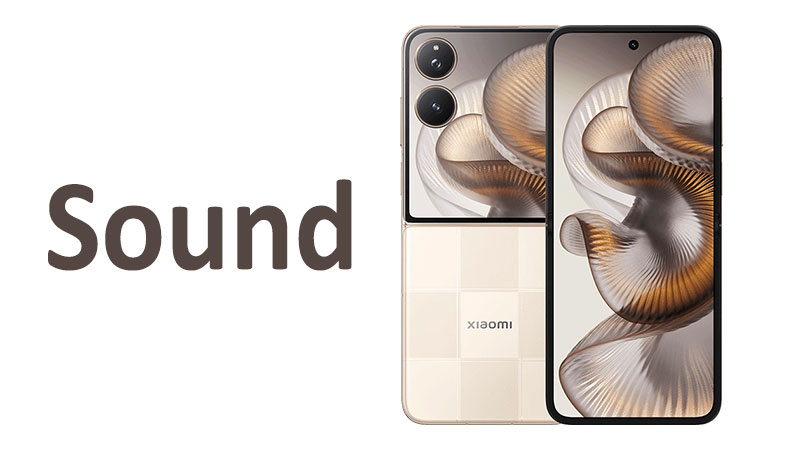The sound experience on a smartphone is often a secondary consideration for many buyers. We focus on cameras, battery life, and processors. However, for a device that serves as our primary source of entertainment, communication, and information, sound quality is crucial. The Apple iPhone 16 Plus delivers a compelling audio experience, building on a legacy of excellence. Its speakers and audio features are designed for both casual listening and serious media consumption. This detailed article explores the intricacies of the Apple iPhone 16 Plus sound, examining its strengths, limitations, and how it stacks up against the competition.
A Deeper Dive into the Audio Technology
The audio system in the iPhone 16 Plus is a testament to Apple’s engineering. It’s a combination of hardware and software working in harmony. At its core, the phone uses a stereo speaker setup. This is a crucial detail for anyone who values immersive sound. The sound comes from both the earpiece and a bottom-firing speaker, creating a balanced and wide soundstage. This design is not new for Apple, but each generation refines the formula for better results.
The speakers on the iPhone 16 Plus are specifically tuned to offer a “fuller” sound. The goal is to provide a rich audio experience without the need for external speakers. This is particularly noticeable when playing music or watching movies. The sound is not just loud; it has a certain depth and clarity. Bass response is surprisingly good for a smartphone, while mids and highs are well-defined. This balance prevents the audio from sounding tinny or distorted, even at higher volumes.
Spatial Audio and Dolby Atmos
One of the most significant features of the iPhone 16 Plus’s audio system is its support for Spatial Audio and Dolby Atmos. These are not just marketing buzzwords. They represent a major step forward in mobile audio.
Spatial Audio creates an immersive, three-dimensional soundscape. It makes you feel like the sound is coming from all around you. This is especially effective when listening to Apple Music tracks mastered in Dolby Atmos. It transforms a simple stereo track into an enveloping concert experience.
The implementation of Spatial Audio is also key for video content. Watching a movie with Dolby Atmos on the iPhone 16 Plus is a revelation. It places sound effects and dialogue precisely in a virtual space. This creates a more cinematic feel. It’s a feature that truly needs to be heard to be appreciated.
A Specialized Comparison: iPhone 16 Plus vs. iPhone 15 Plus
When considering an upgrade, a direct comparison is essential. The iPhone 15 Plus already had a very capable audio system. It featured the same stereo speaker setup and supported Spatial Audio. So, what’s the difference?
The iPhone 16 Plus offers a noticeable refinement. While the core technology is similar, the audio is a bit more robust. Many reviewers note a “fuller” and more impactful sound on the newer model. This is likely due to subtle hardware and software tweaks. The sound is slightly more dynamic. It handles complex audio mixes with greater ease.
However, for the average user, the difference might not be night and day. If you are not a dedicated audiophile, the audio quality on the iPhone 15 Plus is still excellent. The upgrade to the 16 Plus offers an incremental, but worthwhile, improvement.
When compared to competitors like the Samsung Galaxy S24 Plus, the iPhone 16 Plus holds its own. Both phones offer excellent stereo speakers with good clarity and volume. Apple’s strength lies in its ecosystem integration. The seamless experience with AirPods and the deep integration of Spatial Audio gives it an edge.
Pros and Cons of the iPhone 16 Plus Sound
Pros:
- Exceptional Clarity: The speakers produce clear, distortion-free sound. Even at maximum volume, the audio remains clean.
- Immersive Spatial Audio: The support for Spatial Audio and Dolby Atmos is a game-changer. It creates a rich, three-dimensional listening experience for music and movies.
- Balanced Sound Profile: The sound is well-balanced across the frequency range. It offers solid bass, clear mids, and crisp highs.
- Powerful Volume: The speakers are surprisingly loud. They can easily fill a small room.
- Integration with Apple Ecosystem: The audio features work seamlessly with other Apple products. AirPods and HomePod speakers benefit from this tight integration.
Cons:
- No Headphone Jack: As with all modern iPhones, the 3.5mm headphone jack is absent. This forces users to rely on USB-C headphones or wireless options. For some, this is still a significant drawback.
- Incremental Speaker Upgrade: The improvements over the iPhone 15 Plus are subtle. They are not a major generational leap.
- Limited Customization: Apple’s audio settings are relatively simple. There are no detailed EQ (equalizer) settings for users who want to fine-tune the sound.
Important Points for Buyers
For prospective buyers, the audio performance of the iPhone 16 Plus is a key factor. If you frequently watch videos or listen to music without headphones, this phone is a fantastic choice. The large 6.7-inch display of the iPhone 16 Plus pairs perfectly with its high-quality speakers. It turns the device into a great portable media machine.
If you are an audiophile, you will still want to use external devices. The built-in speakers are great, but they cannot compete with a dedicated speaker or high-end headphones. However, the iPhone 16 Plus supports a wide range of audio codecs. It can handle high-resolution audio files like Apple Lossless and FLAC. The USB-C port also allows for direct connection to external DACs (Digital-to-Analog Converters) for a truly high-fidelity wired experience.
The new “Audio Mix” feature is also worth noting. This uses machine learning to improve audio recording quality. It can isolate voices and reduce background noise. This is a huge benefit for anyone who records videos or voice memos.
Conclusion
The Apple iPhone 16 Plus sound performance is a highlight of the device. It combines excellent hardware with advanced software features. The stereo speakers are powerful and clear. They provide a balanced audio profile that enhances media consumption. The support for Spatial Audio and Dolby Atmos is particularly impressive. It creates a truly immersive and engaging listening experience.
While the speaker improvements over the iPhone 15 Plus are not revolutionary, they represent a solid refinement. The iPhone 16 Plus is an ideal choice for anyone who values high-quality, on-the-go audio without headphones. Its tight integration with Apple’s ecosystem and support for high-resolution audio formats make it a versatile device.
The absence of a headphone jack remains a minor point of contention. However, for most users, the benefits of the wireless audio experience and the quality of the built-in speakers far outweigh this drawback. In conclusion, the iPhone 16 Plus offers a class-leading audio experience. It solidifies its position as one of the best smartphones for media consumption on the market today.
FAQ
Does the iPhone 16 Plus have a headphone jack?
No, the iPhone 16 Plus does not have a 3.5mm headphone jack. You will need to use wireless headphones or a USB-C adapter.
What kind of speakers does the iPhone 16 Plus have?
The iPhone 16 Plus features a stereo speaker system. It uses a combination of a bottom-firing speaker and the earpiece to create a wider soundstage.
Is the iPhone 16 Plus audio quality better than the iPhone 15 Plus?
Yes, the iPhone 16 Plus has subtle but noticeable improvements in audio quality. It offers a fuller and more dynamic sound.
Does the iPhone 16 Plus support Spatial Audio?
Yes, the iPhone 16 Plus supports Spatial Audio with dynamic head tracking. It also supports Dolby Atmos for a more immersive experience.
Can I record high-quality audio on the iPhone 16 Plus?
Yes, the iPhone 16 Plus features enhanced microphones. It includes an “Audio Mix” feature that uses machine learning to improve audio recording quality.



